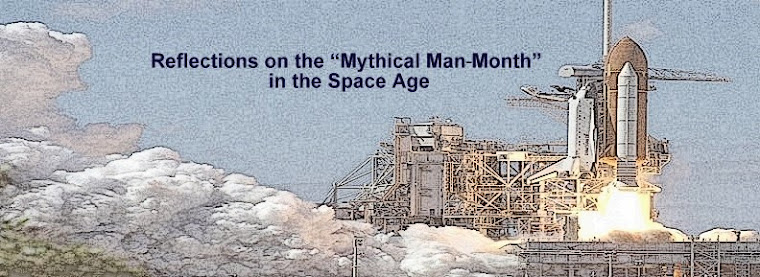From Chapter 2: The Mythical Man-Month
Excerpt
...when schedule slippage is recognized, the natural (and traditional) response is to add manpower. Like dousing a fire with gasoline, this makes matters worse, much worse. More fire requires more gasoline, and thus begins a regenerative cycle which ends in disaster. (page 14)
The problem is that modern charcoal, manufactured under strict consumer-safety guidelines, is one of the least-flammable substances on Earth. (from "Need a light" by Dave Barry, The Miami Herald, June 25, 1995.)
In a volume full of indispensable insights about software development, this is perhaps Brooks' most important. When the schedule is slipping, adding staff will make things worse.
How do you know the schedule is slipping? It may not be obvious. Can you rely on reports from programmers? Maybe. How do you know that the separate dependent pieces of code will integrate when delivered? You don't!
Teams that use modern development processes have a better idea of how progress matches plan, but that knowledge is imperfect. In my experience, yesterday's eminent disaster is inevitably replaced with today's catastrophe and tomorrow's surprise1. There's always something that may be nothing.
Since a reported slip will likely trigger 'help' from project management, a savvy NASA software manger will delay reporting a schedule problems until they are an inescapable certainty. Software is not unique in this regard; the same holds true for the other engineering disciplines. The first manager to report a slip does so at her own hazard. However, once the slip is official, everyone gets breathing room. The key is hold-on until someone else caves. The result: the schedule doesn't visibly slip as the project slides into trouble.
When the slip comes, it is expensive and consumes valuable political capital. At that point schedule margin is gone and the work must be accelerated. That's when gas gets poured on. But it's a different kind of fire than Brooks describes, one with more smoke and less heat. Programmers are rarely added. Here's a few of the obstacles a NASA software manager might confront:
- You can't just drive over to Programmer Depot and find staff. The tools NASA uses are specialized.2
- It takes a while to come to grips with the domain. You have to grok the existing code base, the hundreds of requirements and the stack of standards volumes from organizations like CCSDS . A programmer's ramp-up to productivity takes many months--too late to even consider hiring by the time the gas starts flowing.
- The hiring bureaucracy is stubborn and slow. e.g. It takes at least 6 weeks for a very pushy manager to bring in a contractor. The paperwork is daunting--the acquisition organization is a leviathan.
- Lead developers are rarer than hen's teeth. The culture does not provide the opportunity for programmers of talent to acquire the necessary design or leadership skills. Worse, the good ones lose interest and move on to Google or Microsoft. (I hope to take up this topic when looking at Chapter 3, "The Surgical Team.")
The closure process is intensive and the closure team requires a lot of interaction with the developers. In effect, the development team is pulled into the closure processes, and, aside from fixing a few of the most significant defects, development grinds to a halt.
However, all is not lost; the schedule can be met. Most of the remaining work will be postponed until the operations phase where the development costs are hidden. These upgrades may continue for years. In the end, the team is left with a piecemeal system, that is brittle and costly to maintain. But since there's no competition, what-you-get is what-you-get. This process is consider normal.
If you happen to be a forward-thinking, inspired software development person with a penchant for building the next generation of spacecraft, you've just slid into the inferno.
But...
What if there was actual competition where quality mattered? Would the result be different?
1 Engineers loathe the unexpected.
2 The shuttle engine software is written in Jovial.* The pool of skilled Jovial programmers dried up in the early 80's. Apparently, a Shuttle Engine programmer was required to train for 2 years before being allowed to touch the actual flight code.
*This footnote is incorrect. The shuttle software was written in HAL/S. I discovered the era while preparing a subsequent posting many months later (April '14.) I had believed that shuttle software was written in Jovial since I'd heard that in briefings during the Constellation Program. Interestingly, Jovial was used in defense systems that were developed during this era. For example, the initial B-2 software was written in Jovial (see http://www.semdesigns.com/Products/Services/NorthropGrummanB2.html)


